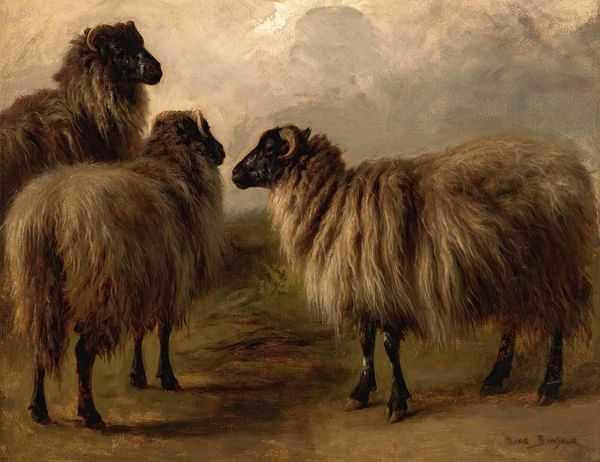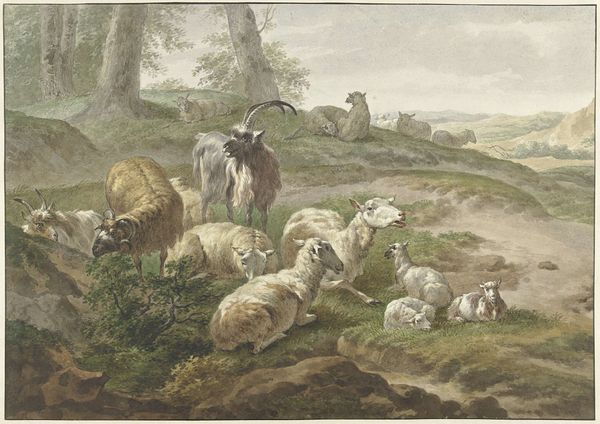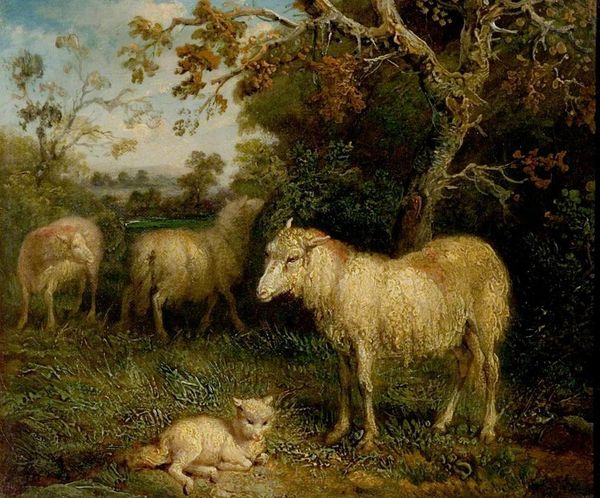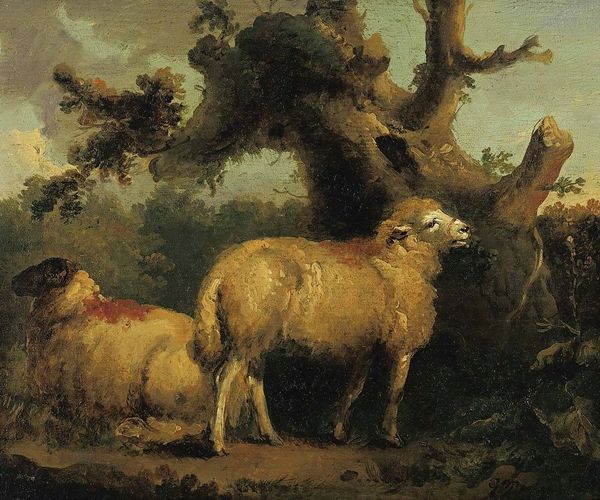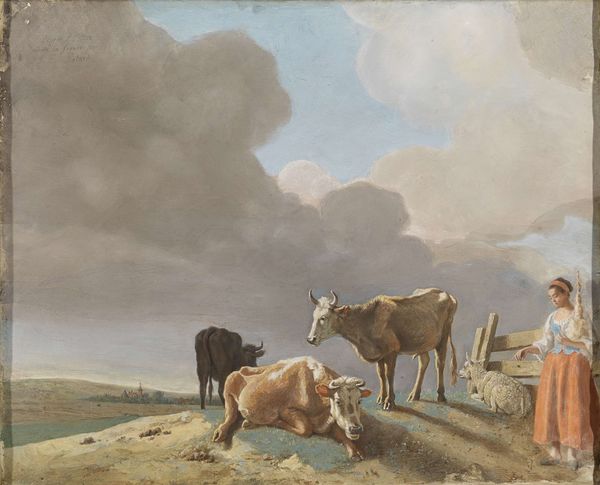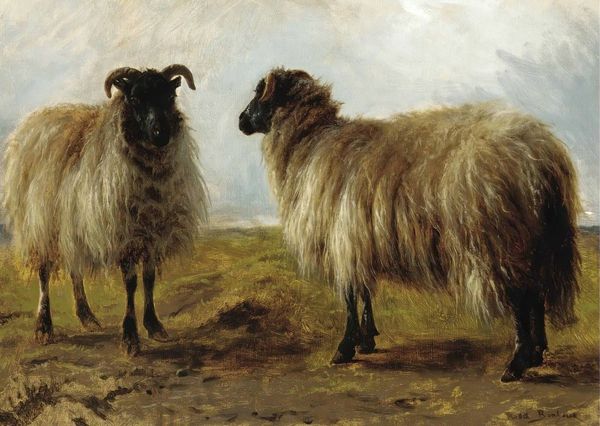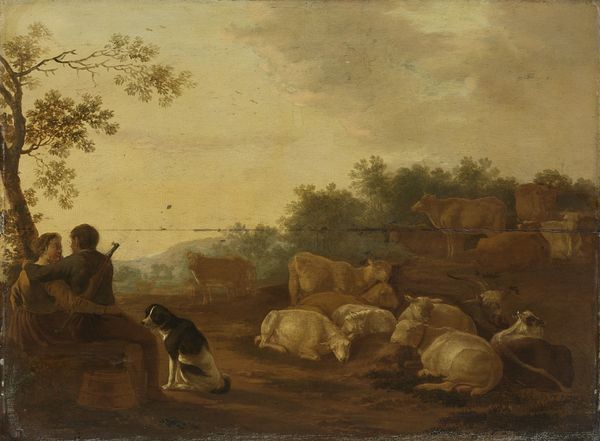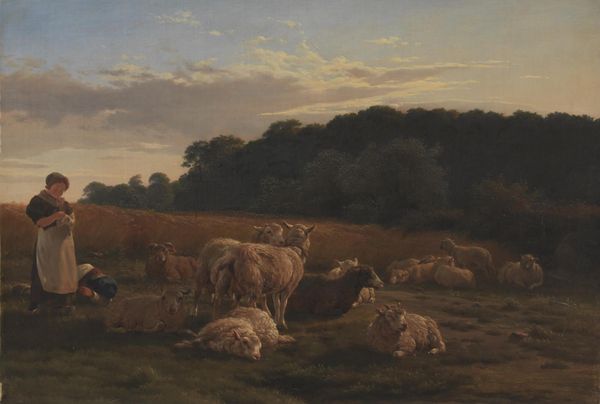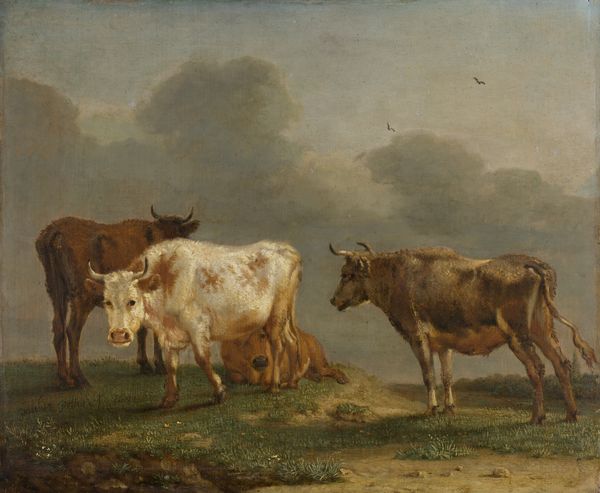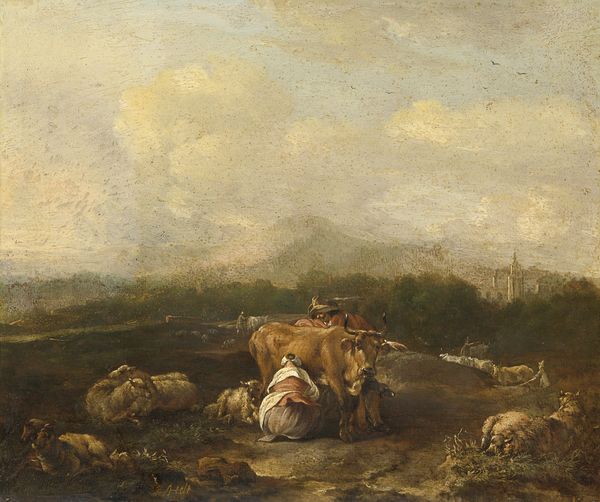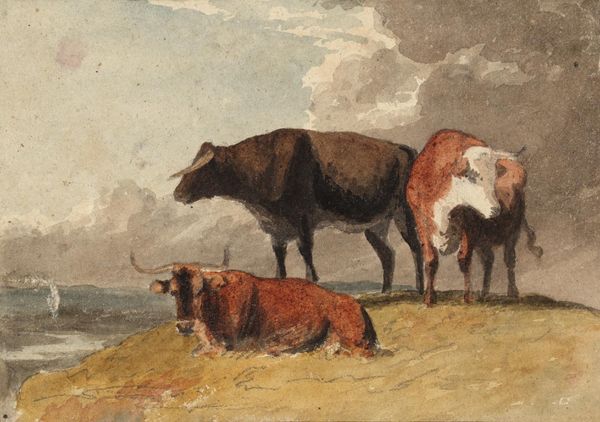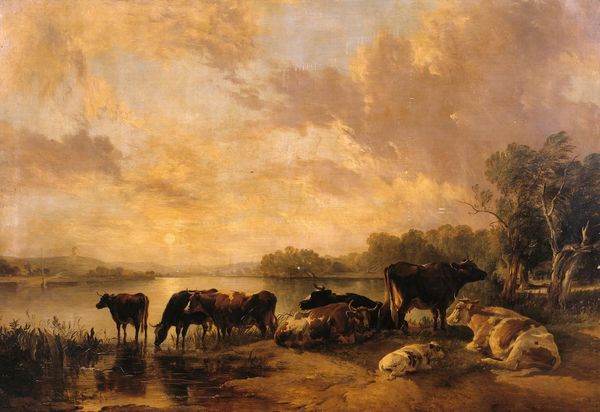
Ryelands Sheep, the King’s Ram, the King’s Ewe and Lord Somerville’s Wether 1801 - 1807
0:00
0:00
painting, oil-paint
#
animal
#
painting
#
oil-paint
#
landscape
#
oil painting
#
romanticism
#
genre-painting
#
realism
Copyright: Public Domain: Artvee
Editor: So, this is *Ryelands Sheep, the King’s Ram, the King’s Ewe and Lord Somerville’s Wether*, painted between 1801 and 1807 by James Ward, using oil paint. I’m struck by how realistic they look, like livestock portraits. What's your take on this painting? Curator: The most interesting thing to me is considering the socio-economic conditions that elevate sheep to portrait status. The rise of agricultural societies and the intense drive for selective breeding is intrinsically linked to material profit, feeding larger populations and fueling the demand for wool. Notice how Ward emphasizes the *texture* of the fleece. This highlights not just the animal, but wool as a raw material, a commodity. Editor: That’s a different way to see it. I was focusing on the artistic style, and maybe the Romantic sensibility of depicting nature. Are you saying these aren’t just sheep, but symbols of the agricultural industry? Curator: Absolutely. The artist has purposefully depicted these specific breeds of sheep belonging to powerful people. It asks the questions: What means of production are elevated, and whose labor goes unseen? In painting the animals belonging to royalty and aristocracy, Ward subtly directs our attention to the process behind the final products, particularly fabric and textiles. Editor: So the art itself becomes part of that economy? The painting is valuable *because* the sheep are valuable? Curator: Exactly! Think about how landscape paintings usually idealize nature, stripping away the evidence of labor. This painting, though, feels almost like an advertisement. It draws our eye not just to the landscape but specifically to highly prized commodities. It's not about beauty alone, but production, prestige, and the raw materials that underpin society. Editor: That definitely gives me a lot to think about regarding artistic representations of agriculture and labor! Thanks! Curator: My pleasure, looking at the materials behind the image reframes the meaning for me, too.
Comments
No comments
Be the first to comment and join the conversation on the ultimate creative platform.

